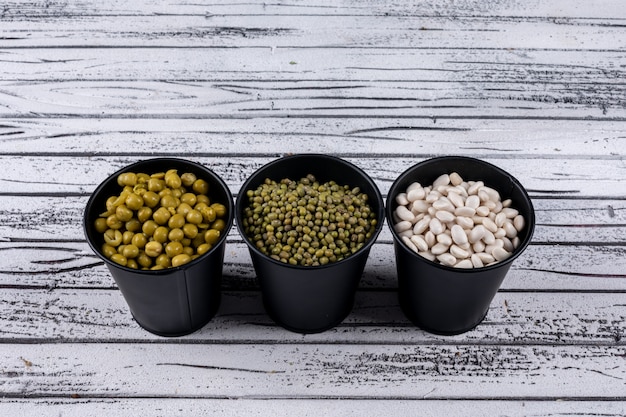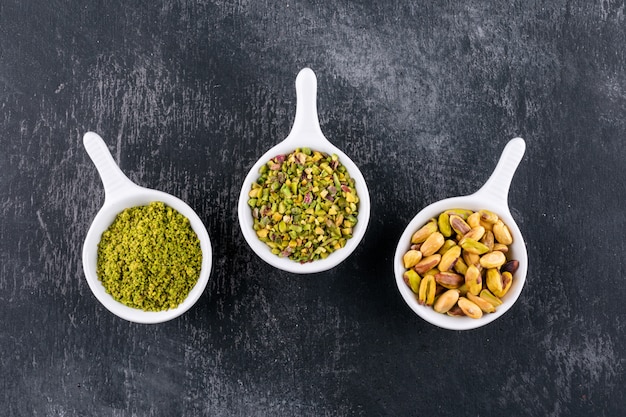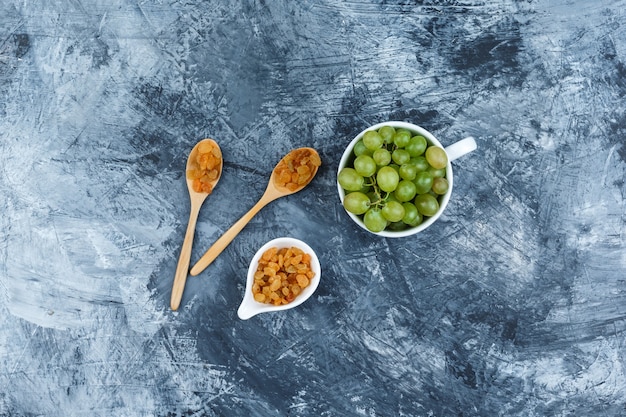Let’s be honest, sometimes you just crave the earthy, comforting flavour of a good old-fashioned black-eyed peas dish. But with so much information out there, figuring out how to cook dried peas from scratch can feel overwhelming. That’s where I come in. I’m here to guide you, step-by-step, through the process of transforming those humble dried peas into a culinary masterpiece. Get ready, because we’re about to embark on a journey of flavour and discovery!
(Part 1) Choosing Your Black-Eyed Peas: A culinary adventure Begins

The first step in any good culinary journey is choosing your ingredients wisely. Black-eyed peas are no exception. You’ll find them in most supermarkets, usually in the dried beans and pulses aisle. Don’t be swayed by those pre-cooked ones in a can – trust me, nothing beats the flavour of freshly cooked dried peas.
A World of Varieties: Exploring the Options
When it comes to black-eyed peas, you’ve got a few options to choose from. Each variety brings a unique flavour and texture to the table:
Regular black-eyed peas: These are the most common type, with a distinctive dark brown “eye” and a creamy white body. They hold their shape well when cooked and are perfect for stews, salads, and soups.
Baby black-eyed peas: These little gems are smaller and more tender than their regular counterparts, boasting a slightly sweeter flavour. They’re ideal for salads and side dishes where you want a delicate texture.
Black-eyed peas with the “eye” removed: You’ll sometimes find these in the supermarket, their dark “eye” meticulously removed. They have a slightly lighter flavour and are a good choice for those who prefer a more subtle taste.
Storing Your Peas: Keeping the Flavour Locked In
Once you’ve chosen your peas, storing them properly is key. Dried peas can last for a long time, but it’s important to keep them in a cool, dry place in an airtight container. This will prevent them from absorbing moisture and going off, ensuring they remain fresh and ready to be transformed into delicious dishes.
(Part 2) Prepping Your Peas: The Importance of Soaking

Now, we’re getting down to the nitty-gritty. Before you start cooking, it’s absolutely essential to soak your black-eyed peas. Think of it as a little pampering session for your peas, giving them a chance to rehydrate and become wonderfully plump and tender. This is a crucial step in unlocking the best flavour and texture.
The Power of Soaking: Why It Matters
Soaking your peas offers a number of key advantages that will make your final dish sing:
Reduces cooking time: Soaked peas cook much faster than dry peas. No one wants to spend hours in the kitchen!
Improves digestibility: Soaking helps to break down some of the complex sugars in the peas, making them easier to digest.
Enhances flavour: Soaking allows the peas to absorb more water and flavour, leading to a richer, more satisfying dish.
Soaking Like a Pro: A Step-by-Step Guide
Here's how to soak your peas like a seasoned chef:
1. Rinse and sort: Give your peas a good rinse under cold water to remove any debris. Then, take a moment to sort through them, removing any small stones or broken peas.
2. Soaking ratio: Use a ratio of about 2 cups of water for every 1 cup of dried peas.
3. Soaking time: Soak your peas for at least 6 hours, or even overnight. I find that a full 12 hours gives the best results.
4. Don't drain the soaking water: The water you soak the peas in is brimming with those delicious nutrients. Don't waste them!
(Part 3) Cooking Your Black-Eyed Peas: From Raw to Ready

Now, let’s get those peas simmering. Remember, cooking dried peas is a bit of a slow and steady process. But trust me, the effort is worth it!
Choosing Your Cooking Method: Finding Your Style
You can cook your black-eyed peas in a variety of ways, each with its own advantages:
On the stovetop: This is my go-to method. Just add your soaked peas and soaking water to a large pot, bring to a boil, then reduce the heat and simmer until the peas are tender. This usually takes about 30-45 minutes after boiling.
In a pressure cooker: This is a great option if you’re short on time. Simply add your soaked peas and soaking water to your pressure cooker, and cook according to the manufacturer’s instructions.
In a slow cooker: If you’re looking for a hands-off approach, you can also cook your black-eyed peas in a slow cooker. Add your soaked peas and soaking water to your slow cooker, and cook on low for 6-8 hours, or on high for 3-4 hours.
Mastering the Timing: The Secret to Tender Peas
Cooking your black-eyed peas until they're tender is essential for a delicious final product. Undercooked peas will be hard and unappetizing, while overcooked peas will turn mushy.
The "squish test": When you think your peas are nearly done, take one out of the pot and give it a gentle squeeze. If it squishes easily, it’s ready.
Adding a Symphony of Flavour: Seasoning Secrets
While black-eyed peas are delicious on their own, adding some flavour can really take them to the next level.
Seasoning Basics: A pinch of salt and a bay leaf are always a good starting point. I also like to add a bit of black pepper, garlic powder, or onion powder.
Herbs and Spices: Let your creativity soar with herbs and spices! Try adding a sprig of rosemary, a few cloves, or some turmeric powder for a deeper flavour.
Vegetable Magic: Don’t be afraid to throw in some chopped onions, garlic, carrots, or celery while your peas are cooking. These vegetables will add flavour and texture to your dish.
(Part 4) Delicious Black-Eyed Peas Recipes: Inspiring Ideas
Now that you’ve mastered the art of cooking black-eyed peas, it’s time to put your skills to the test with some delicious recipes. Here are a few of my favourites to get you started:
Black-Eyed Peas Salad: A Refreshing Delight
Ingredients:
1 cup cooked black-eyed peas
1/2 cup chopped red onion
1/4 cup chopped fresh cilantro
1/4 cup chopped green bell pepper
1/4 cup lime juice
2 tablespoons olive oil
Salt and pepper to taste
Instructions: Combine all ingredients in a bowl and toss to combine. Serve chilled.
Black-Eyed Peas Stew: Hearty and Comforting
Ingredients:
1 cup cooked black-eyed peas
1 onion, chopped
2 carrots, chopped
2 celery stalks, chopped
2 cloves garlic, minced
4 cups vegetable broth
1 teaspoon dried thyme
1/2 teaspoon salt
1/4 teaspoon black pepper
Instructions: Saute the onion, carrots, and celery in a pot until softened. Add the garlic, vegetable broth, thyme, salt, and pepper. Bring to a boil, then reduce the heat and simmer for 15 minutes. Stir in the cooked black-eyed peas and simmer for another 5 minutes.
Black-Eyed Peas Soup: A Warm and Nourishing Bowl
Ingredients:
1 cup cooked black-eyed peas
1 onion, chopped
2 cloves garlic, minced
4 cups vegetable broth
1 (14.5-ounce) can diced tomatoes, undrained
1 teaspoon dried oregano
1/2 teaspoon salt
1/4 teaspoon black pepper
1/2 cup chopped fresh parsley
Instructions: Saute the onion and garlic in a pot until softened. Add the vegetable broth, diced tomatoes, oregano, salt, and pepper. Bring to a boil, then reduce the heat and simmer for 15 minutes. Stir in the cooked black-eyed peas and simmer for another 5 minutes. Garnish with fresh parsley before serving.
Black-Eyed Peas Fritters: Crispy and Delicious
Ingredients:
1 cup cooked black-eyed peas
1/2 cup chopped onion
1/4 cup chopped fresh cilantro
1/4 cup all-purpose flour
1 egg, beaten
1/4 teaspoon salt
1/4 teaspoon black pepper
vegetable oil for frying
Instructions: Combine all ingredients in a bowl and mix well. Heat the vegetable oil in a large skillet over medium heat. Drop spoonfuls of the black-eyed pea mixture into the hot oil and fry until golden brown and cooked through. Serve immediately.
(Part 5) Black-Eyed Peas: Beyond the Side Dish
You might be thinking, “Black-eyed peas are great, but what else can I do with them?” Well, my friend, your culinary horizons are about to expand! Black-eyed peas are incredibly versatile and can be used in all sorts of creative ways.
Black-Eyed Peas in Soups and Stews: A Hearty Base
We’ve already covered how amazing black-eyed peas are in soups and stews. But did you know you can also use them in chilis, gumbo, and other hearty dishes? They add a unique texture and a satisfying depth of flavour.
Black-Eyed Peas in Salads and Sides: A Protein Boost
Black-eyed peas are a perfect addition to salads, adding a hearty protein boost. You can toss them into simple green salads, or create a more complex salad with grilled vegetables, quinoa, and a delicious vinaigrette.
Black-Eyed Peas in Burgers and Veggie Patties: A Flavorful Twist
Want to add a bit of protein and a unique flavour to your veggie burgers or patties? Try incorporating black-eyed peas into the mix! They’ll add texture and bulk to your patties, and the flavour will be divine.
Black-Eyed Peas in Dips and Spreads: A Creamy Delight
If you’re a fan of dips and spreads, black-eyed peas are your new best friend. They can be used to create delicious hummus alternatives, and they add a creamy texture and a subtle flavour to dips.
Black-Eyed Peas in Baked Goods: A Hidden Ingredient
Okay, I know what you’re thinking: “Black-eyed peas in my cake? No way!” But hear me out. Black-eyed peas can actually be used to add moisture and protein to baked goods like muffins, breads, and even cookies. They’re a secret weapon for creating delicious and nutritious baked treats.
(Part 6) Black-Eyed Peas and Health: A Nutritious Powerhouse
Black-eyed peas are not only delicious, but they’re also a nutritional powerhouse. These little legumes are packed with essential nutrients that can benefit your overall health.
Protein Power: Building Blocks for a Healthy Body
Black-eyed peas are a great source of protein, which is essential for building and repairing tissues, and for maintaining healthy bones and muscles.
Fibre Fantastic: Promoting Digestive Health
Black-eyed peas are also high in fibre, which helps to keep you feeling full and satisfied after a meal, and promotes digestive health. A diet rich in fibre is essential for a healthy gut.
Vitamin and Mineral Rich: Essential for Overall Well-being
Black-eyed peas are also a good source of various vitamins and minerals, including iron, folate, potassium, and magnesium. These nutrients are important for maintaining energy levels, supporting healthy blood circulation, and boosting the immune system.
A Low-Calorie Option: A Healthy Choice for Weight Management
Black-eyed peas are relatively low in calories, making them a good choice for those who are trying to maintain a healthy weight. They’re a satisfying and nutritious way to enjoy a delicious meal without overdoing it on the calories.
(Part 7) Black-Eyed Peas: Cultural Significance and Traditions
Black-eyed peas have a rich cultural history and are deeply embedded in traditions around the world.
Southern US Tradition: A Symbol of Good Luck
In the Southern United States, black-eyed peas are a staple food, often served with collard greens and cornbread on New Year's Day. This tradition is believed to bring good luck and prosperity in the coming year. The peas represent coins, the greens represent money, and the cornbread represents gold.
African Roots: A Source of Comfort and Nourishment
Black-eyed peas originated in Africa, and they are a common ingredient in many African dishes. They are often cooked with rice, vegetables, and spices, and they are a source of comfort and nourishment.
International Appeal: A Culinary Staple Across the Globe
Black-eyed peas are enjoyed in many cultures around the world, from the Caribbean to Latin America. They are often used in stews, soups, salads, and rice dishes.
(Part 8) Black-Eyed Peas: Tips and Tricks for Success
We’ve covered a lot of ground, but let’s round things off with some helpful tips and tricks to ensure your black-eyed pea adventures are always a success.
Tips for Cooking: Perfecting Your Technique
Don’t overcook: Overcooked black-eyed peas can become mushy. Cook them until they are tender, but still hold their shape.
Add acidity: Adding a squeeze of lemon juice or a splash of vinegar towards the end of cooking can help to brighten the flavour of the peas.
Use fresh ingredients: Use fresh herbs and spices whenever possible to give your dishes a vibrant flavour.
Tips for Serving: Elevating Your Dishes
Serve hot or cold: Black-eyed peas are delicious served hot or cold. They make a great addition to salads, soups, stews, and rice dishes.
Get creative with toppings: Try topping your black-eyed peas with chopped onions, cilantro, avocado, or a dollop of yogurt.
(Part 9) FAQs: Your Black-Eyed Pea Questions Answered
Now, let’s answer some common questions about black-eyed peas.
1. Can I cook black-eyed peas without soaking them?
Yes, you can cook black-eyed peas without soaking them, but it will take significantly longer. They will also be more likely to end up hard and unappetizing. Soaking is definitely the way to go for the best results.
2. How long can I store cooked black-eyed peas in the refrigerator?
Cooked black-eyed peas can be stored in the refrigerator for up to 3-4 days in an airtight container.
3. Can I freeze cooked black-eyed peas?
Yes, you can freeze cooked black-eyed peas for up to 3 months. Just make sure to thaw them completely before using them in your recipes.
4. Are black-eyed peas good for weight loss?
Black-eyed peas are a low-calorie, high-fibre food, which can make them helpful for weight loss. They are also a great source of protein, which can help keep you feeling full and satisfied.
5. What are some other ways to use black-eyed peas?
Black-eyed peas can be used in a variety of creative ways, from making veggie burgers to adding them to smoothies. Get creative and experiment to find your favourite ways to use black-eyed peas!
Conclusion: Black-Eyed Peas: A Culinary Delight
There you have it! A comprehensive guide to cooking dried black-eyed peas. From choosing the perfect peas to crafting delicious recipes, I hope I’ve inspired you to embrace these little legumes in your kitchen. Remember, cooking is about experimentation, creativity, and a bit of love. So get out there, grab a bag of black-eyed peas, and let your culinary journey begin!
Everyone is watching

How to Cook Frozen Lobster Tails Perfectly: A Step-by-Step Guide
RecipesLobster. Just the word conjures up images of lavish meals, special occasions, and a taste of luxury. But let's...

Pigs in a Blanket Cooking Time: How Long to Bake for Perfect Results
RecipesAh, pigs in a blanket. Just the name conjures up images of those delightful little parcels of crispy pastry en...

Pork Fillet Cooking Time: How Long to Cook It Perfectly
RecipesPork fillet, or tenderloin as it's sometimes called, is a real favourite in our house. It's so versatile, and...

The Ultimate Guide to Cooking Delicious Frankfurters
RecipesLet's face it, we all love a good frankfurter. It's a classic, simple, and always satisfying. But let's be rea...

Wolf Meat Recipes: A Guide to Cooking Wild Game
RecipesLet's be honest, you don't see wolf meat at your local butcher shop every day. It's a bit of a wild card, but ...
